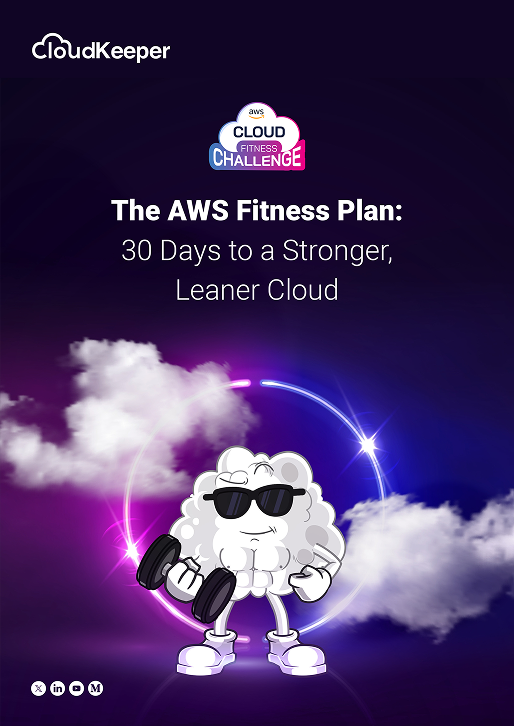The cloud cost optimization process involves identifying mismanaged resources, eliminating waste, reserving capacity for higher discounts, and right-sizing computing services to scale.
Let’s look at some of the easiest ways to optimize cloud spend that do not require any kind of development changes:
- Talk To Your Service Provider To Get The Best Deal:
One of the easiest things, to begin with, would be to have price negotiations with cloud service providers or value-added providers about optimization or discounting possibilities to get the best deal for your business. For example, CloudKeeper offers guaranteed savings of up to 15% without any impact or long-term commitment for all its CloudKeeper customers.
- Optimize the Cloud Infrastructure:
Optimizing the Cloud infrastructure has a direct link with efficiency, performance, and cost. Hence, optimizing your infrastructure as per the new model when shifting to a cloud-based model is important. Monitoring and measuring play an important role in the optimization of cloud infrastructure.
It is a good strategy to have an easy mechanism that can automatically bring up and shut down the infrastructure that is not needed in a 24*7 work environment, which mainly includes development, QA, UAT, and performance testing, which are not required for more than eight to nine hours five days a week. It is possible to save up to 40-60% in non-production environments.
- Storage Optimization
Organizations can opt for different archival and cloud storage mechanisms that can be leveraged based on the usage pattern. Cloud provides the flexibility to store data based on its usage, that are classified into three categories :
Hot Storage: It includes the data that is accessed very frequently.
Warm Storage: It includes data that is accessed less frequently, accessed as quickly as hot data, so it can be stored on slightly slower, capacity-optimized.
Cold Storage: It includes data that is rarely accessed.
It is important to consider access patterns when deciding what data to store. Setting cloud mechanisms properly will lead to cost efficiency.
- Leverage Auto-Scaling
Being cloud-native, it is important to pick the right tool for the tasks, and dynamically allocate capacity with features like auto-scaling which makes the system scale up on demand, serve the request and return back to normal capacity.
The auto-scaling eliminates the need to respond manually in real-time to traffic spikes that require additional resources and instances by automatically altering the number of active servers.
These are the few action steps that can help you avail quick wins before moving on to mature optimization practices. Now, let's look at some other key practices for reducing your cloud bills:
Rightsize Your Compute Resources Proactively
Cloud computing has a variety of procurement options, such as On-Demand, Scheduled, Reserved Instances, Savings Plans, and Spot. The different types of options may be suitable for a different organizations based on the approach that they are using.
For example, In the initial stage, if you are starting with re-factoring the legacy system or vertical scaling, you can go with the Reserved Instances(RI) Option.
In another scenario, if the need is to speed up the delivery time and make the system more scalable in terms of data, we can move towards saving plans. In the case of discounting, as the data keeps on growing, one can work out with vendors on private pricing to grab the best deal. The idea here is to align your option with the approach or goal you are aiming for.
Invest in Automation
Automating tasks induces muscle memory and helps avoid mistakes and make informed decisions. Automating tasks such as tag governance is a critical foundation for your cloud governance initiatives. Tag governance helps identify infrastructure that is making an impact and infrastructure that is less often used. The use of consistent tagging policies can have multiple benefits, from improving compliance and automation to cost management and enhancing cloud environments.
Take help from Service Provider and Third-party in the FinOps journey
It is a fast-evolving crowded space, and a business cannot do it all on its own, hence it is a good idea to take help from tools or collaborate with a partner who can make your FinOps journey easier.
A service provider can be classified into three categories:
Managed service provider: They generally provide services in a combination of using their own homegrown tools or using third-party tools, along with technically competent and capable people who are providing solutions to organizations. They can be working completely in an outsourced model or they are embedded into the technology teams of the client organizations and providing FinOps as a service.
Saas Solution or products: these are products that different organizations can use depending upon their need depending upon their life cycle, As the space is fast evolving businesses can have products which are providing very customized or deep dash-boarding, reporting, all the way to automation for reserved instances for a savings plan, etc. But you have to use them, integrate them into your ecosystem, and see what makes sense for you.
Dedicated FinOps Vendors: They provide everything from informing reporting dashboard things to helping you with saving plans and architecture. CloudKeeper is an example of a dedicated FinOps solution. Dedicated FinOps provider looks at Cloud Optimization as a dedicated discipline and this is what separates them from other service providers. They generally use a combination of software and savings plan all integrated together to provide that solution. Here is a comprehensive report by ISG if would like to go deep dive into the finops vendor ecosystem
CloudKeeper provides instant savings of up to 15% starting from Day 1 as soon as the customer signs up with us in addition to a cost management platform and a team of cloud experts for periodic evaluation and audits, 24*7 monitoring, and finops services.
If you would like to know the best cloud cost management strategy for your business connect with our experts today.
